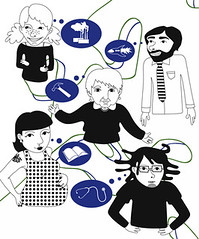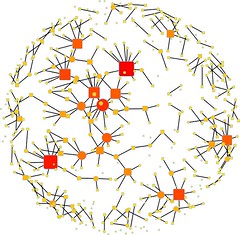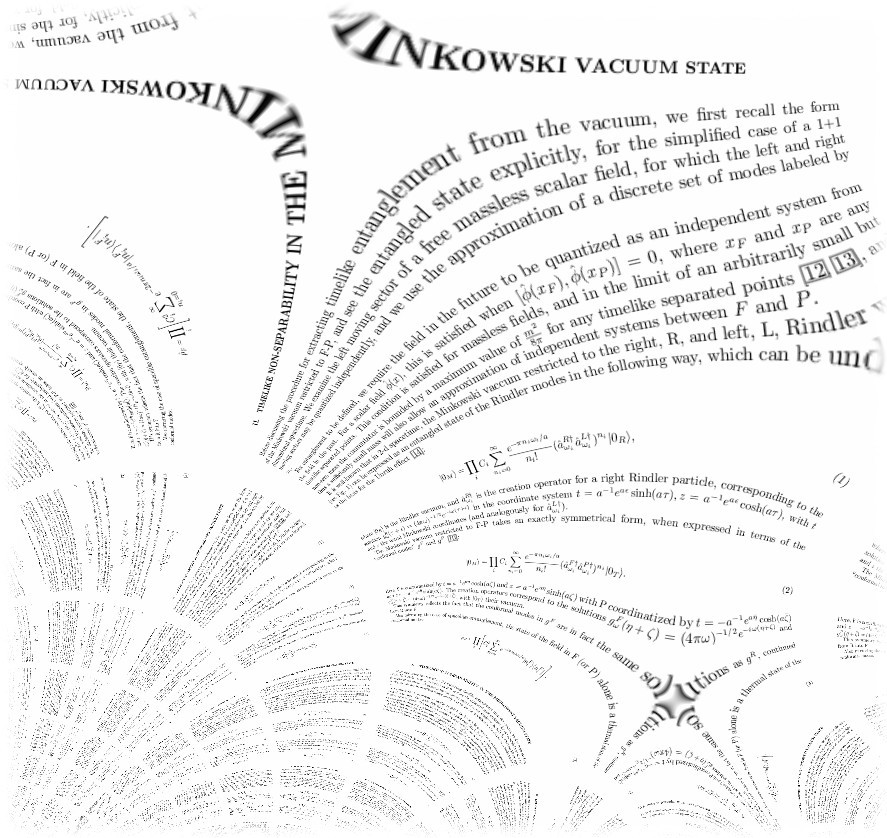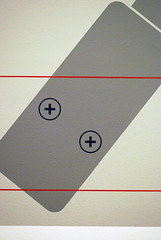Creativity comes at a price
On the other hand, the past is a cadaver. Experience is a limited tool only. Also, it can make you sterile or distract you. I really believe that one must annihilate experience. Get free of it. Otherwise it lures you, ties your hands, makes you a victim of false promises. It robs you of that instinctiveness which to me is the most beautiful thing in human behavior.
(Excerpt from an interview with the almost 70 years old Michelangelo Antonioni)
Joseph Tainter on Anthropological Complexity
Keynote talk (in 7 parts) delivered to the 2010 International Conference on Sustainability: Energy, Economy, and Environment organized by Local Future.
Any explanation of political collapse carries lessons not just for the study of ancient societies, but for the members of all complex societies in both the present and future. Dr Tainter describes nearly two dozen cases of collapse and reviews more than 2000 years of explanations. He then develops a new and far-reaching theory that accounts for collapse among diverse kinds of societies, evaluating his model and clarifying the processes of disintegration by detailed studies of the Roman, Mayan and Chacoan collapses.Tainter argues that societies collapse when their investments in social complexity reach a point of diminishing marginal returns. According to Tainter, societies become more complex as they try to solve problems. Social complexity can include differentiated social and economic roles, reliance on symbolic and abstract communication, and the existence of a class of information producers and analysts who are not involved in primary resource production. Such complexity requires a substantial "energy" subsidy (meaning resources, or other forms of wealth). When a society confronts a "problem," such as a shortage of or difficulty in gaining access to energy, it tends to create new layers of bureaucracy, infrastructure, or social class to address the challenge. Eventually, this cost grows so great that any new challenges such as invasions and crop failures cannot be solved by the acquisition of more territory. At that point, the empire fragments into smaller units. Source: http://intersci.ss.uci.edu/wiki/index.php/The_Collapse_of_Complex_Societies
On discontinuities
 |
| Via Flickr: Ludwig designed every window, door, window-bar and radiator in the noblest proportions and with such exactitude that they might have been precision instruments. Then he forged ahead with his uncompromising energy, so that everything was actually manufactured with the same exactness. I can still hear the locksmith, who asked him with regard to a keyhole, "Tell me, Herr Ingenieur, is a mllimetre here really that important for you?" and even before he had finished the sentence, the loud, energetic "Ja", that almoust startled him." Excerpts from chapters V and Vi of Family Recollections; written by Hermine Wittgenstein in early 1940s, Originally uploaded by bg&emese |
 |
wittgensteinhaus |
Wittgenstein must have sized up language in relation with us when he wrote, Wovon man nicht sprechen kann, darüber muss man schweigen, which in translation reads, Whereof one cannot speak, thereof one must be silent or About what one can not speak, one must remain silent. Our world is over-filled with morphemes, of one sort or another, but that doesn't make it for more or better. I have suspected for some time now that silence could remedy the situation.
Thirty spokes meet in the hub.
Where wheel isn’t is where it’s useful.
Hollowed out, clay makes a pot.
Where the pot’s not is where it’s useful.
Cut doors and windows to make a room.
Where the room isn’t, there’s room for you.
So the profit in what is
is in the use of what isn’t.
Lao Tzu, Tao Te Ching, 500 bc
(from Le Guin, 1997: 14)
Recently I have discovered Valery Afanassiev, a Russian-born living in France who, among several other interesting preoccupations, plays piano. Here's an extended quote from this practitioner of one of few eternal languages, music.
Nowadays silence has become a rare phenomenon that is energetically set upon by various machines, machine guns and the twittering of human voices. Silence is out of our reach because we have forgotten how to listen to it. As if brushing it aside, we fill in the pauses that turn up here and there. Silence withdraws into itself, punishing us for our nonchalant scorn. The instrumentalists who opt for fast tempos seem to apprehend the absence of notes. All the time they move their fingers or vocal cords to sidestep the chasms at the bottom of which there lies the source of music, its eternal mystery. I often say that silence is the foundations of music. Recently I found a similar thought in a work of the writer who remains, however, beyond the scope of my usual readings—François Mauriac. I was not surprised in the least: my idea is perfectly banal. I am rather surprised that musicians do not express it in every interview. All you have to do is guard against any noise without stopping to listen to yourself and the world. And gradually music comes into existence.
Like nobody else, Emil Grigorievich [N.B. Gilels, another pianist] knew how to worship and handle silence. Even his way of speaking testified to this knowledge, for he often interrupted his speech to let the people around him meditate on what had been said and also listen to silence. Not only did he speak musically but music literally spoke through his voice, his manners, his thoughts, it never forsook him, not for an instant—a beautiful example of requited love. Even in his jokes one could hear music—something akin to the technique perlé which was one of his numerous fortes.
~
According to my Japanese friend, there has been no pianist like Emil Grigorievich in the history accessible to us. Indeed it is not difficult to reach such a conclusion upon analysing all available recordings. No pianist seems to have had such a command of the instrument, without insufficiencies and blind spots. One of the giants in this field, Arturo Benedetti Michelangeli, did not have the dynamic range comparable to what I heard once at the Big Conservatoire Hall. That night Emil Grigorievich rounded off his programme with Liszts Spanish Rhapsody. I have never heard such a forte either at the Conservatoire or elsewhere. Even the Berlin Philharmonic under Karajan's baton did not make the air resound so mightily. As for the use of the pedal, Gilels' only rival was again Michelangeli; and only Rachmaninov's recordings disclose to us the inner essence of rhythm so implacably, with the same determination. But, I repeat, no pianist has had at their disposal all these qualities: the refined pedal, an incomparable dynamic range that seemed to include both six pianos and six fortes, the divine sound that had no counterpart in nature, perlé, octaves, trills. I once asked Emil Grigorievich how to play trills. He said they should be played slowly: even in trills one should be able to hear silence, its serene, unruffled presence. Garrulous trills are obnoxious. The way Emil Grigorievich practised the instrument also reveals his intimate bond with silence. In contrast to Richter, who repeated the same passage over and over again, he never made his neighbours wonder, Will he ever drop with exhaustion? Whenever I go away from the piano and sit down on a divan to hear the piece I am learning with the inner ear, I remember my teacher, his habits, his sonorous silence. He taught me to hear not only music but also life itself; or rather, he taught me to hear music in life. I wish I could say there is nothing in the world except music. Whatever happens in it is music. Even death is music.
Some maintain that Gilels was above all a virtuoso. He was a virtuoso in the highest and noblest sense of the term, being different in this respect—in all respects that is—from contemporary virtuoso pianists, dubbed by promoters the athletes of the piano, who just play fast and have no inkling of how the instrument should sound and how to use the pedal. These so-called virtuosos are not acquainted with many components making up the notion of virtuoso playing. And since they violate silence as soon as they sit down at the piano—and before, and after—often their fast tempos produce no effect. What these spectacular tempos boil down to is a lump of notes you are supposed to like. These pianists do not listen to the music they perform and consequently hear no silence in it. One should play Gilels' recording of Chopin's Etude in F Minor, Opus 25, to learn what piano-listening amounts to, when demonstrated by a great pianist. And what about the way he listened to Mozart, Brahms and Grieg? Can one, upon the testimony of his recordings (and concerts), affirm that he was the greatest musician among pianists, all the more so if one put on the list of his composers Beethoven?
Many had the feeling that Emil Grigorievich was a restrained, unnatural person. But how could a man who played so naturally turn out to be unnatural in everyday life? Why confide in strangers anyway? Our drawn-out conversations which often lasted far into the night seemed to prove that I was no stranger to him. Does music depend on the ways and characters of the people who are professionally involved with it? Perhaps not: Wagner's example is sufficient to deter one from prying into composers lives. When prying into Gilels' life, however, one is sure to be struck by his natural approach to everyday events—as if his musical style were spreading around him. A lot can be said about his humanity, but I am prevented from doing so by his own modesty, by his unwillingness to display his generosity in public.
I cannot refrain, however, from revealing a story told by his son-in-law, Peter Nikitenko. Several times a year, Emil Grigorievich asked Peter to depose flowers on the tombs of the composers buried at the Novodevichye Cemetery in Moscow. I know several people who, upon arriving in a city they have never visited, rush towards the nearest cemetery: they are tomb collectors. But those who can hear cemeteries, their silence and music, are few and far between.
If a bell is struck, the sound reverberates into the distance. Similarly, if a point filled with mental energy is painted on a canvas (or a wall), it sends vibrations into the surrounding unpainted space...A work of art is a site where places of making and not making, painting and not painting, are linked so that they reverberate with each other (Lee Ufan).
European entrepreneurs
 | |
| This illustration was published in the magazine Europe Efficient/Europa Effekt, which is distributed in Sweden, Germany, Wales and Portugal. You may download it as a PDF here: www.entreeprojektet.se/ |
LinkedIn exchange about European entrepreneurship
Europeans are not hungry enough, don't want success and are not prepared to take the risks, claimed a panel of European VCs and entrepreneurs.
fCh: "Europeans are not hungry enough, don't want success and are not prepared to take the risks, claimed a panel of European VCs and entrepreneurs."
Since when is hunger a virtue that's somehow leading to more entrepreneurship? Ask some African country, or the state of... West Virginia. Outside few places in the US, in which the mix of nationalities is anyway as diverse as you'd find in any international airport, where else do you see people taking the risks we like to call entrepreneurial?
At the end of the day, I'd redirect the question back to the European panel, What are the risks they've undertaken?
BTW, risk is actuarial, uncertainty is entrepreneurial.
Since when is hunger a virtue that's somehow leading to more entrepreneurship? Ask some African country, or the state of... West Virginia. Outside few places in the US, in which the mix of nationalities is anyway as diverse as you'd find in any international airport, where else do you see people taking the risks we like to call entrepreneurial?
At the end of the day, I'd redirect the question back to the European panel, What are the risks they've undertaken?
BTW, risk is actuarial, uncertainty is entrepreneurial.
Standing in Line at Chinese Embassy in SF
On LinkedIn, to the Director of Stanford Media X
Director: Sometimes the reality of the world comes to you in strange places and without even looking for it. Waiting for my Visa. Long lines. No air conditioning. Bored. So I decide to talk with the guy ahead of me.
Although born in Shanghai, he came to the University of Minnesota as an exchange student in EE on a program initiated through the Microelectronic and Information Sciences Center. He moved to Austin Texas to work in the emerging semiconductor sector catalyzed by Sematech and the Microelectronic Computer Consortium. From there, he took the Silicon Valley leap and worked for several years at one of the Valley’s IC design firms. Now a US resident, he was at the Chinese Embassy getting documentation to take his family to Shanghai, where he was launching a company making chips for the cleantech industry. His new company is financed by both US and Chinese investors. In an instant his story is the metaphor of our future.
Media X at Stanford University, in responding to this challenge, has put together a remarkable group of global thought leaders and practitioners to unpack these frontiers and initiate new perspectives. Come join the discussion and share new visualizations of competitive advantage in the networked global economy. With a focus on ICT, mobile and greentech, the July 11 Innovation Ecosystems Summit provides insights about the new systems and networks. The program is structured to keep us all ahead of the game. The world is watching - not only at Stanford, but all of us - and looking for solutions that leverage knowledge-based solutions!
We've priced this workshop so you can come with a friend or colleague, because we know there will be a lot to talk about after the Summit. So, even though the early bird registration is closed, we’re giving you the opportunity to add an associate to your registration at a special guest rate of $95. Use Code: IEN2011. Contact me for group rates.
Although born in Shanghai, he came to the University of Minnesota as an exchange student in EE on a program initiated through the Microelectronic and Information Sciences Center. He moved to Austin Texas to work in the emerging semiconductor sector catalyzed by Sematech and the Microelectronic Computer Consortium. From there, he took the Silicon Valley leap and worked for several years at one of the Valley’s IC design firms. Now a US resident, he was at the Chinese Embassy getting documentation to take his family to Shanghai, where he was launching a company making chips for the cleantech industry. His new company is financed by both US and Chinese investors. In an instant his story is the metaphor of our future.
Media X at Stanford University, in responding to this challenge, has put together a remarkable group of global thought leaders and practitioners to unpack these frontiers and initiate new perspectives. Come join the discussion and share new visualizations of competitive advantage in the networked global economy. With a focus on ICT, mobile and greentech, the July 11 Innovation Ecosystems Summit provides insights about the new systems and networks. The program is structured to keep us all ahead of the game. The world is watching - not only at Stanford, but all of us - and looking for solutions that leverage knowledge-based solutions!
We've priced this workshop so you can come with a friend or colleague, because we know there will be a lot to talk about after the Summit. So, even though the early bird registration is closed, we’re giving you the opportunity to add an associate to your registration at a special guest rate of $95. Use Code: IEN2011. Contact me for group rates.
Media X at Stanford University: mediax.stanford.edu
 |
eScience NetworkFrom data shared by Matthijs, whom I met at the eSocial Science conference. This shows a bipartite network of people and projects funded by the UK eScience initiatives; the people are circles and the projects are squares, or maybe it's the other way around... The color and size of the nodes indicates degree; redder and bigger nodes have more connections than smaller and yellower nodes. Source: http://www.fli... |
fCh: I think we've done alright about innovating. Yet, we lost the ability to harvest the fruits of our innovation. Believing in a networked world, which is indeed an apt metaphor for commodities and capital, we cared not about the innovation driven by, and from within, the production-process itself.
You write, "The program is structured to keep us all ahead of the game. The world is watching - not only at Stanford, but all of us - and looking for solutions that leverage knowledge-based solutions!" No, we cannot be all ahead, unless we buy Friedman's 'flat-world' platitudes. We have to compete for resources, seeds and harvest alike. Yes, of course all eyes are still on Stanford, but that's because there are few places left in the US to show leadership of any type.
What is my suggestion for your gathering? To encourage 'contrarian' voices and/or start looking at how we can keep innovating while re-building our capabilities. Perhaps, several meetings would be necessary just to assess the situation and then start planning ahead.
If we continue to level our advantage through networks, the benefits of the innovation will level too, sooner or later. At most, we might consider innovation networks as mechanisms of explicit knowledge creation and sharing, provided that we complement them with our own production whereby tacit knowledge is created (read, sticky). Then, I could see a hope for economic sustainability in the whole process. As innovation stands today, there is little hope for sustainability at any level of analysis.
Good luck, for we can all use it now, fCh
“Designers’ power in organizations”
This is a LinkedIn conversation, among SIP, fCh, and JvB
SIP: “The Prince”, by Machiavelli, has been the definitive textbook on power for the last 500 years. Last year Jeff Pfeffer wrote “Power”, the definitive book on the subject for our generation. Apart from maybe torture and killing, not much has changed. However it is definitely more readable and has many more contemporary cases. How are designers doing in these 21st Century games of corporate power and what is the outlook for their future?
SIP: As we move into an experience economy, intangibles are becoming increasingly important. Intangibles now represent the majority of many a firm’s value. With markets being increasingly dynamic, old static economic models fail and management strategies have to be frequently updated. Strategies are now a dynamic capability. To create intangible value, you need . . . well, creative people. Of course the value of your creativity depends on the level at which you contribute.
SIP: Let us examine the general credibility of these statements by comparing them in turn with the three top power indicators.
Powerful departments have cohesion! Designers need to have their designs selected in order to have successful careers and they are in competition with their colleagues in a zero sum game. This cultural structure is in no way conducive to cohesion.
JvB: Maybe "power" should be replaced by "influence", or influential efficacy. Power in itself utilized unwisely, even if sustainable (like long-term dictators), maybe is not an indicator of success.
WSJ had an article on Cadillac, Monday, the article criticized GM for not having "product guys" in power. It sort of touches on the failure of a business- centric approach, in relation to delivering the product.
Thinking about the finger pointing comment...there is fundamental fallacy in just doing that. This may be pervasive organizational dysfunction, a failure of adequate reflective analysis. I think the general level of critical thinking is steadily declining, to where saying the alleged prudent thing may eclipse the reality. I can suppose product market failure in one sense almost always a marketing issue (exception may be a physical/material failure or force majeure). Since looking forward is inductive, right data can support a theory of the future, but not determine or guarantee success. Your study of risk reduction by broader design involvement is compelling. This can tie in with the idea of "creative" processing occurring more often from beginning to end
SIP: Hi JvB, - Good to hear from you. I completely agree with you. My book, “Profit from Design, - leveraging design in business” which is now available for friends, contributors and fellow designers on: http://www.ingo... , addresses these issues. It would be good to catch up in the near future! Yours, - SIP.
SIP: This brings us to the third power indicator, “perception is reality”. If designers are viewed as failing one third of the time, it is difficult to project a perception of a positive and reliable contribution. Studies show you need to provide about three positive experiences to make up for one negative experience. With the current hit rate and little documentation supporting design performance, it would seem designers would not be able to get ahead in the corporate environment.
fCh: SIP, in modernity, the observation about the increasing role of finance, towards the end of the capitalist cycle, was made by Marx. Neo-Marxists, in our post-modern times, have shown how the 4 capitalist cycles follow Marx's idea (Venetian, Dutch, British, and now American). For a book, though you may be better off with a summary, have a look at Govanni Arrighi's 'Adam Smith in Beijing.'
My interest in this line of thought stems from wanting to place entrepreneuring in a larger/historical context.
P.S. Schumpeter himself had some views...
My interest in this line of thought stems from wanting to place entrepreneuring in a larger/historical context.
P.S. Schumpeter himself had some views...
FYI:
fCh: I used to think highly of intangibles too. However, how do you fight inflation of intangibles? Of course, I'm assuming you take for granted their arbitrariness.
SIP: Hi fCh, - Thank you for the book recommendation and web links, I am familiar with Adam Smith’s “Wealth of Nations” and look forward to expand my knowledge. Sincerely, - SIP
SIP: Button sizes and corner radii, though important, by nature contribute less than creating a new design philosophy for an organization. Of the many recommendations in his book on power, Jeff Pfeffer mentions the following areas on which to focus: Powerful departments have cohesion. Create resources others need and remember perception is reality. Designers may be naturally weak in these areas, however their position has huge potential. How can this potential best be mined?
SIP: To gain a sense of what designers think, we turned to LinkedIn’s Industrial Design Group and posted the question: Are any designers’ in positions of power in the corporate structure? The gist of the comments were that although designers may not have formal authority they have the attention of management.
SIP: To gain a sense of what designers think, we turned to LinkedIn’s Industrial Design Group and posted the question: Are any designers’ in positions of power in the corporate structure? The gist of the comments were that although designers may not have formal authority they have the attention of management.
SIP: Let us examine the general credibility of these statements by comparing them in turn with the three top power indicators.
Powerful departments have cohesion! Designers need to have their designs selected in order to have successful careers and they are in competition with their colleagues in a zero sum game. This cultural structure is in no way conducive to cohesion.
SIP: The second power indicator was the ability to create resources others need. Does anybody inside of a corporation need industrial design and how do they know the designers have delivered? Engineering and marketing can measure their performance and back up their claims with data from calculations, simulations, tests and studies. When a new product fails in the market, they can show that they did their job and point their fingers at design. Designers are unable to point back. Since thirty to forty-one percent of new products fail, design is at a clear disadvantage.
JvB: Maybe "power" should be replaced by "influence", or influential efficacy. Power in itself utilized unwisely, even if sustainable (like long-term dictators), maybe is not an indicator of success.
WSJ had an article on Cadillac, Monday, the article criticized GM for not having "product guys" in power. It sort of touches on the failure of a business- centric approach, in relation to delivering the product.
Thinking about the finger pointing comment...there is fundamental fallacy in just doing that. This may be pervasive organizational dysfunction, a failure of adequate reflective analysis. I think the general level of critical thinking is steadily declining, to where saying the alleged prudent thing may eclipse the reality. I can suppose product market failure in one sense almost always a marketing issue (exception may be a physical/material failure or force majeure). Since looking forward is inductive, right data can support a theory of the future, but not determine or guarantee success. Your study of risk reduction by broader design involvement is compelling. This can tie in with the idea of "creative" processing occurring more often from beginning to end
SIP: Hi JvB, - Good to hear from you. I completely agree with you. My book, “Profit from Design, - leveraging design in business” which is now available for friends, contributors and fellow designers on: http://www.ingo... , addresses these issues. It would be good to catch up in the near future! Yours, - SIP.
SIP: This brings us to the third power indicator, “perception is reality”. If designers are viewed as failing one third of the time, it is difficult to project a perception of a positive and reliable contribution. Studies show you need to provide about three positive experiences to make up for one negative experience. With the current hit rate and little documentation supporting design performance, it would seem designers would not be able to get ahead in the corporate environment.
SIP: Based on literature and personal observations the conclusion appears to be that designers are not well equipped for a position of power in an organization. Whether future changes in society and its needs and/or the actual design education program will change this remains to be seen.
Please let me know which topics you like to be addressed the coming months. Here are some suggestions:
- What is "Design Thinking”
- Can art and design create monumental change
- How to establish creative communities in metropolitan areas?
- Application of design in entrepreneurial enterprises
Please let me know which topics you like to be addressed the coming months. Here are some suggestions:
- What is "Design Thinking”
- Can art and design create monumental change
- How to establish creative communities in metropolitan areas?
- Application of design in entrepreneurial enterprises
JvB: vonB asks the universe- just what is this Design Thinking? Certainly not a power play...
fCh: SIP, the limited power of design comes from the limited opportunities for design. I'm talking in practical terms, not some norms driven academic conversation.
That being said, power is where the money is. As long as the money people see that you can spend on, say, advertising to push crappy product out, why take a chance with design?
Another thing is that you can talk about advertising budgets, relate them to sales quotas, and life goes on as long as you stay afloat. Design is not something you talk about, at least not in those terms.
Design is performance, anywhere between function and seduction. Power is that side effect accountants measure in dollars.
That being said, power is where the money is. As long as the money people see that you can spend on, say, advertising to push crappy product out, why take a chance with design?
Another thing is that you can talk about advertising budgets, relate them to sales quotas, and life goes on as long as you stay afloat. Design is not something you talk about, at least not in those terms.
Design is performance, anywhere between function and seduction. Power is that side effect accountants measure in dollars.
SIP: Hi fCh, - Very succinct, I couldn’t have put it better myself. The catch, is design offer twice the ROI of marketing. The way I see it, - we can leave the world unchanged or be proactive and see if we can better measure and communicate the value we can create. Do you have any ideas? Sincerely, - SIP
fCh: I'm probably too old school, but I think design is better done than talked about. The executive suite ought to be sensitive to its merits, or else.
Good design should be related to moral values, not dollar value. It's as simple as that. And that's why instances of good design don't abound.
For better or worse, we've cultivated too much the idea that we can outsmart design by populating a meta-space whereby numbers and other similar abstractions rule. In contrast, design is material.
How do you get to good design? Harder and harder in the US, but times are changing for us as well. We'll rediscover its virtues when will have exhausted all other alternatives.
If you need to make a numbers case, just grab any piece of good design (from Braun to Bosch/Miele and on to Apple, B&O and beyond) and see what a premium it commands in the market--as far as diffusion, price, loyalty and all that.
SIP: Hi fCh, I sense that many designers feel like this. Do you think this is holding us back from contributing real value to the world? Sincerely, - SIP
fCh: SIP, I'm not sure I understand your question.
However, I think that there are several things holding good design from materializing in the US. It's cultural, education, managerial values--it's many things as in zeitgeist.
Good design starts with staring at the problem and confronting it. It ends with closing your book on it. In our world, where more consumption follows consumption and that becomes good consumption, bad design can be good practice as in planned obsolescence. Even the mighty darling Apple is guilty of this...
However, I think that there are several things holding good design from materializing in the US. It's cultural, education, managerial values--it's many things as in zeitgeist.
Good design starts with staring at the problem and confronting it. It ends with closing your book on it. In our world, where more consumption follows consumption and that becomes good consumption, bad design can be good practice as in planned obsolescence. Even the mighty darling Apple is guilty of this...
SIP: Hi fCh, - Though I agree with you to a some extent, I meant to say, do you think the beliefs and attitude you expressed is holding designers back? Sincerely, - SIP
fCh: ...I don't see how. For one, I'm not sure my beliefs are that widely held to make a difference, for the other, I'm not in any position to direct design--other than voting with my wallet.
P.S. One should distinguish between my beliefs and what I report the state of the world to be.
P.S. One should distinguish between my beliefs and what I report the state of the world to be.
SIP: Hi fCh, - Sorry, I thought you believed your belief was common. Do you think designers’ beliefs are holding them back? Sincerely, - SIP
fCh • Dear SIP there's nothing to be sorry about.
What I mean to say is:
1) Designers are not always as trained or talented as to command respect through their work--in the world of everything goes, it's difficult to make one come up with inspiring solutions within give constraints;
2) Their bosses are even more clueless--in matters of design, that is.
The most anti-design aspect of our consumerist society I find to be planned-obsolescence.
What I mean to say is:
1) Designers are not always as trained or talented as to command respect through their work--in the world of everything goes, it's difficult to make one come up with inspiring solutions within give constraints;
2) Their bosses are even more clueless--in matters of design, that is.
The most anti-design aspect of our consumerist society I find to be planned-obsolescence.
Maps of Facebook ego-"universes"
Via Flickr:
"This was one of the earliest network maps I worked on in Q1 2008 -- rather solipsistically, it's a map of my own Facebook friends (with my own node removed, so that it pulls apart a little.) It attempted to map two degrees of separation; what you see here is my friends and their friends. I think I removed the pendants." [...]
Would you sign a blanc check, not knowing who or when is going to cash it? In effect, that's what people are doing when handing over all their stuff to Facebook.
I guess, the answer to the above would be YES, in case you discounted your future indefinitely to, well,
"This was one of the earliest network maps I worked on in Q1 2008 -- rather solipsistically, it's a map of my own Facebook friends (with my own node removed, so that it pulls apart a little.) It attempted to map two degrees of separation; what you see here is my friends and their friends. I think I removed the pendants." [...]
Would you sign a blanc check, not knowing who or when is going to cash it? In effect, that's what people are doing when handing over all their stuff to Facebook.
I guess, the answer to the above would be YES, in case you discounted your future indefinitely to, well,
( 0 + the_use_value_of socializing )
from now on
You also may be an entrepreneur
In many discussions I see the category "entrepreneur" being used to mean many a concept. Usually, "entrepreneur" is employed in its heroic version, as defined by Schumpeter and usually associated in the common conversation with innovation, creativity, or those light-bulbs. However, there is so much more to it, and we seem to have recurring types of entrepreneurs, depending on the time, place and state of the technology. With these I mind, I'm citing here an excerpt from Peter Nijkamp's paper, Entrepreneurship in a modern network economy, summarizing the known types of entrepreneurs:
In their standard work on ‘The Entrepreneur’ Hebert and Link (1982) make the following typological classification of the ‘species’ of entrepreneur:For more, google the names in the parentheses. Is this all entrepreneurs can be? For sure not, so think ahead, which is another way of saying, be entrepreneuring!
1. The entrepreneur is the person who assumes the risk associated with uncertainty (e.g. Cantillon, Von Thtinen, Mill, Hawley, Knight, Von Mises, Cole, Shackle)
2. The entrepreneur is the person who supplies financial capital (e.g. Smith, Bohm-Bawerk, Pigou, Von Mises)
3. The entrepreneur is an innovator (e.g. Bentham, Von Thtinen, Schmoller, Sombart, Weber, Schumpeter, Shakle)
4. The entrepreneur is a decision maker (e.g. Cantillon, Menger, Marshall, Wieser, Amasa Walker, Francis Walker, Keynes, Von Mises, Cole, Schultz)
5. The entrepreneur is an industrial leader (e.g. Say, Saint-Simon, Amasa Walker, Francis Walker, Marshall, Wieser, Sombart, Weber, Schumpeter)
6. The entrepreneur is a manager or superintendent (e.g. Say, Mill, Marshall, Menger)
7. The entrepreneur is an organiser and co-ordinator of economic resources (e.g. Say, Wieser, Sombart, Weber, Clark, Davenport, Schumpeter, Coase)
8. The entrepreneur is the owner of an enterprise (e.g. Quesnay, Wieser, Pigou, Hawley)
9. The entrepreneur is an employer of factors of production (e.g. Amasa Walker, Francis Walker, Wieser, Keynes)
10. The entrepreneur is a contractor (e.g. Bentham)
11. The entrepreneur is an ‘arbitrageur’ (e.g. Cantillon, Walras, Kirzner)
12. The entrepreneur is an allocator of resources among alternative uses (e.g. Cantillon, Schultz).
 |
| [ I Am An Entrepreneur ] |
along the diminishing returns of social science
Doing social science research in an established discipline such as strategic management, is akin to preparing a feast with the crumbs from an orgy. Before considering some recipe, think of the 5th labor of Hercules, to clean the Augean stables.
Now, that's what I call diminishing returns. As alternative, why can't social scientists open up today's newspaper and think about fixing some wrongs?
Intangibles: What about?
Intangibles is one of those shortcuts outsiders employ to eat and have the cake of expediency, lest one gets accused of lack of rigor and/or sophistication.
This is what Wikipedia has to say about them, and this is how they come out in one form of communication.
The question I raise about intangibles should not connote exclusive anchoring in the materialist ontology as much as an invitation for a more adequate repositioning:
How do we fight inflation of intangibles? Of course, I'm assuming we take for granted some level of their arbitrariness, and the reader's general aversion for inflation.
Another similar concept is complex adaptive systems, or simply, complex systems. The treatment of this complexity is better postponed for now.
This is what Wikipedia has to say about them, and this is how they come out in one form of communication.
The question I raise about intangibles should not connote exclusive anchoring in the materialist ontology as much as an invitation for a more adequate repositioning:
How do we fight inflation of intangibles? Of course, I'm assuming we take for granted some level of their arbitrariness, and the reader's general aversion for inflation.
Another similar concept is complex adaptive systems, or simply, complex systems. The treatment of this complexity is better postponed for now.
Dieter Rams' ten commandments
Good design is innovative.Good design makes a product useful.Good design is aesthetic.Good design helps a product to be understood.Good design is unobtrusive.Good design is honest.Good design is durable.Good design is consistent to the last detail.Good design is environmentally friendly.Good design is as little design as possible.
When is enough
From the Motley Fool article by Morgan Housel:
The relevance of this quote is that it should not be confused for the sour grapes syndrome, but taken as a sure and overall better way out of the logic so many subscribe to, yet only for the benefit of the chosen few. Capitalism without virtues is worse than theft.
Enough.
That's the title of Vanguard founder John Bogle's fantastic book about measuring what counts in life.
The title, as Bogle explains, comes from a conversation between Kurt Vonnegut and novelist Joseph Heller, who are enjoying a party hosted by a billionaire hedge fund manager. Vonnegut points out that their wealthy host had made more money in one day than Heller ever made from his novel Catch-22. Heller responds: "Yes, but I have something he will never have: enough."
The relevance of this quote is that it should not be confused for the sour grapes syndrome, but taken as a sure and overall better way out of the logic so many subscribe to, yet only for the benefit of the chosen few. Capitalism without virtues is worse than theft.
The money machine(ry)
A recent comment to a NYTimes article about the a possible change in the legal profession, due to automating the work now given to junior employees, as the ones in the images, made me think the following describes the fate of many of the newly minted graduates, regardless of their choosing Goldman Sachs, McKinsey, Accenture, or some law firm. It's the way character starts being tested/built, for there are not typically that many prior opportunities. And, by the way, it's also how the big houses generate a sizable chunk of their profits.

Alberta Romeo
NYC
I am an attorney, and think that this is a great idea. I know that law students are worrying, "What about my job as a first-year at Cravath, Davis Polk, or S&C?" Will I have that job? The answer is that, in a few years, those firms will need to recruit fewer "bodies" to do low-level work such as discovery. And that will be better, not worse, for the legal profession, and for you.
Big firms are slave camps. The large firms hire 50 or 60 new associates each year, usually top students from elite law schools. The firms then proceed to work those young lawyers virtually to death -- 60 to 80 hours a week, 2000 to 2800 hours per year (I know someone who billed that many hours). After three or four years, most of these young attorneys have quit, and of the 20 or so who are left, all but a few are fired ("asked to leave"). The big firms, in other words, are blood-suckers who exploit young attorneys, albeit at high salaries, to do their worst, most boring, lest productive work. A young lawyer will finish his stint at a big firm exhausted, sick, disillusioned and -- this is the point -- with virtually none of the skills that he or she actually needs to practice law. Oh, he or she will have written memos and parts of briefs, reviewed a few hundred thousand documents and maybe carried the litigation bag to court a few times. As a corporate associate, he or she will have drafted a few credit agreements and spent upteen nights rereading the same documents. The real practice, however, occurs at higher feeding levels -- senior associates and partners. The lower ranks are worse than soldiers; they are pack horses.
The big firm plantation culture is a disgrace to the profession and survives chiefly because big deals and big cases need grunt labor. Someone who comes of Columbia, Harvard, NYU, Stanford or U of Chicago -- the big schools -- should not start his or her career as a slave. Many people who go through this mill are scarred for life by the experience, and many leave the profession entirely. This is not a system for "training" young lawyers, but rather one for protecting corporate America, using young lawyers as commodities.
So great that we now can do the work via computer. Corporate America will still be fed, but not with young brains and flesh. The recruiters who swarm campuses will make speeches about seeking "only the best," but that most of the best -- one would hope -- would have incentives to go elsewhere. What those incentives will be, and how the profession will grow, no one knows. When I graduated from law school however, the admission's director of my top-4 school described what was going on at the big firms as "immoral." Money knows no value other than money, but now that the business value appears to be in technology, maybe human values will step in to rescue the legal profession from itself.

Subscribe to:
Comments (Atom)















fCh: SIP, your inferential sequence is not without problems. Political economists have warned that in history, each time finance takes over, the end of the game is near.
How can one put power in games? Simply let the players be and power rises to the top.
As for a world ruled by design-ers, I'm not sure what dystopia that could be, but I suggest one re-consider the history from Marinetti's Futurist Manifesto.
SIP: Hi fCh, - Thank you for the insights! I was unaware the when finance people are in control it ends in catastrophes. Can you recommend any papers or books addressing this? Yes power rises to the top, I guess that is the definition of power, - right? I agree with you having designers in absolute power may not be ideal and will read Marinetti's Futurist Manifesto. Thank you for the tip. Sincerely, - SIP